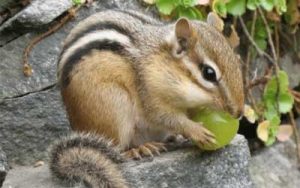
Chipmunks have chubby cheeks and fuzzy tail which make them adorable although they can deliver significant damages to your home, yard and surrounding areas. They burrow your yard up to 30 feet long. Chipmunk mostly becomes active in the early morning and late afternoon. They give birth from April to May or August to October months.
Signs Of Chipmunk Infestation
Like rodent species, chipmunks can leave marks of chewing and scratching on your material. They also make scurrying noises behind walls, under floors or high ceilings.
Dangers Associated With Chipmunk Infestation
They ruin uproot garden plants, landscaping and make their way through walls, decks and home foundation. Additionally, they can put cracks in the cement and basement floor. All this end up weakening your overall property structure. Moreover, chipmunks cause several parasites and diseases to humans.
Prevention Tips
- Avoid keeping the things in the yard that attract the chipmunks.
- Caulk gaps outside your home and tight the caps of your chimneys.
- Remove the standing water and secure the bird feeders.
- Discard the trashcans away from your home.
Treatment
Hire the wildlife removal experts to deal with chipmunk infestation safely.
At Hamilton Wildlife, we have many years of experience in wildlife removal. For the past many years, we have been serving wildlife management services to our residential and commercial clients.
